
by Krista | Oct 7, 2015 | Spring
Cooking with cheese requires a little bit of skill. After all, you wouldn’t want to lose the integrity of the taste. To delight your gustatory sense with a truly pleasing flavor, here are the tips you should know about when serving up cheese with your culinary creations.
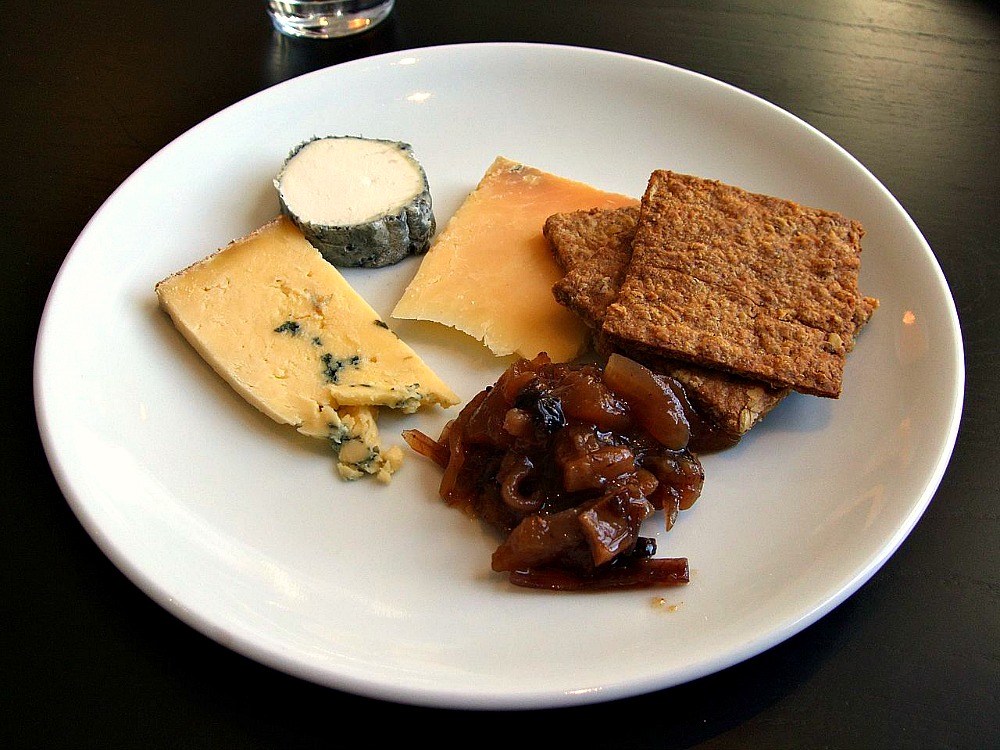
Add some zest into your cheese sauce
Lemon juice in your cheese sauce may not end up curdling, but for an improved taste in your dish, consider adding a little lemon zest. This will create a wonderful boost in flavor. Other enhancers you can use include lime and orange, but what would work best will depend on the type of cheese.
Cheese in your hamburger
If you’re the type of person who includes a thick serving of cheese in your hamburger, then throw it in about a couple of minutes before turning off the heat on the meat. This will ensure that it will be deliciously and properly melted and you won’t end up with a rigid cheese in your sandwich.
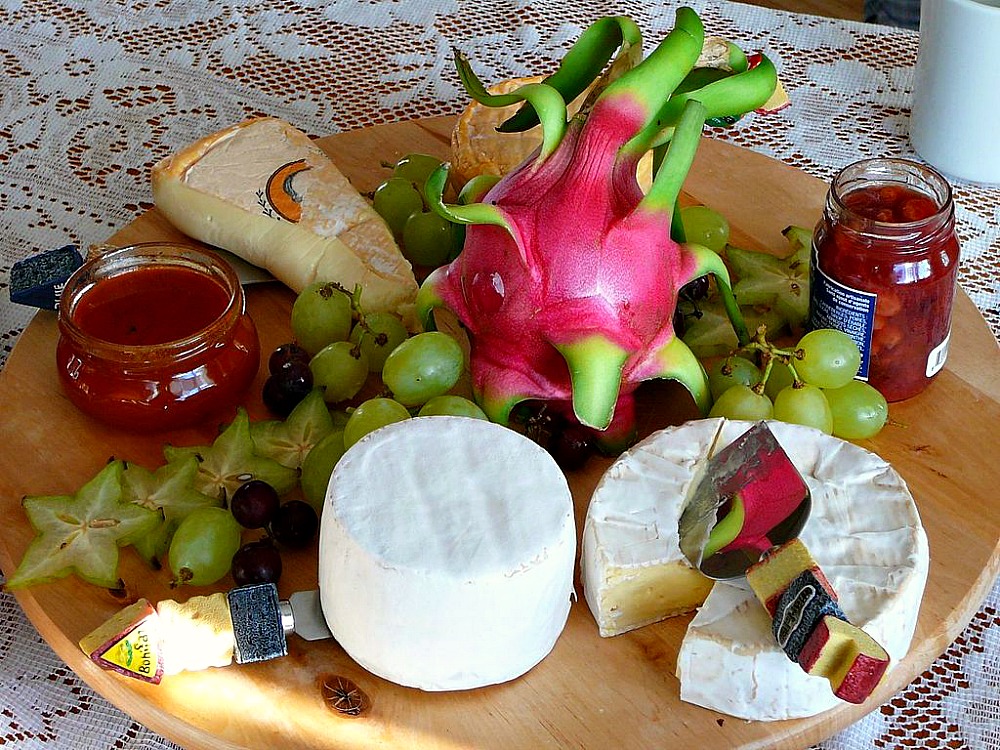
Keeping your baked casserole’s rich taste
Making a casserole involves reducing moisture with heat, which is why the dish will get drier the longer it’s in the heat. Moisture absorption is also done when cooking vegetables and pasta in a cheese casserole. If the dry result is what you like, then you can keep it that way. Otherwise, to achieve a rich taste in your casserole, add a little bit of cream or milk.
Melting shredded cheese to a hot dish
When melting shredded or crumbled cheese into the hot dish you’re making, such as hot pasta, warm salad, or cooked vegetables, put the cheese in just before serving. This way, the cheese will not settle into the bottom and harden, losing its taste and appeal.
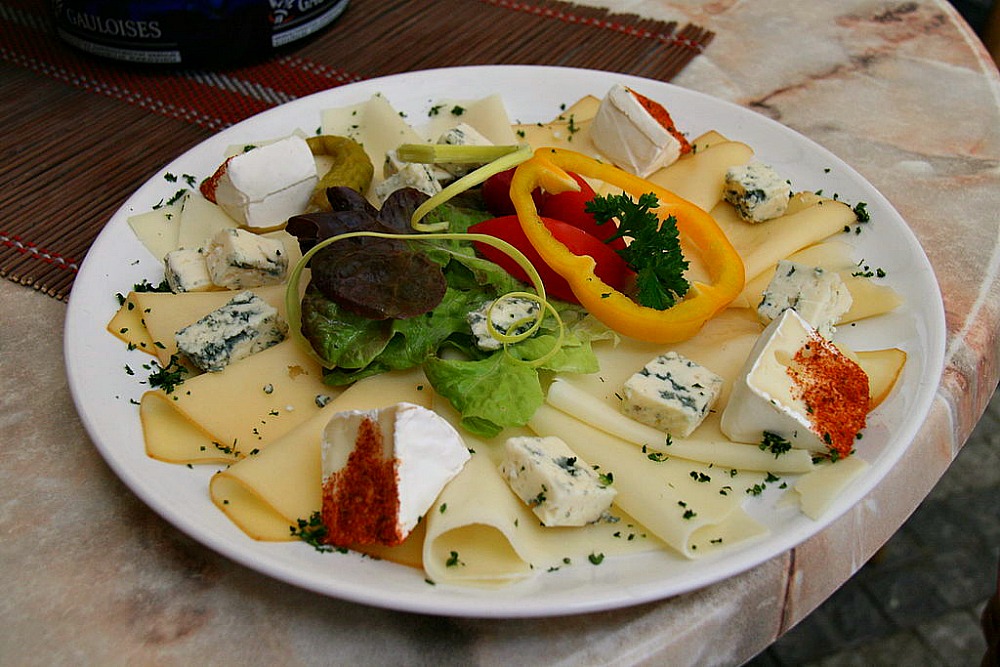
Shredding your cheese
If you’re cooking with shredded cheese, make sure that you do the shredding while the cheese is still cold. If not, it might turn mushy. You can shred your cheese using a food processor, a knife, or a simple cheese grater. Cheeses that are soft or fresh may not need a shredder at all, as you can just take it apart with your fingers.
Heating pricey cheese types
Some delicate kinds of cheese that come in with a higher price tag lose their lovely taste when heated. This is true in the case of triple cream cheeses and others. To be safe, make sure to experiment a little with a small amount so you’ll know what works. This way, you won’t end up wasting your expensive cheese.
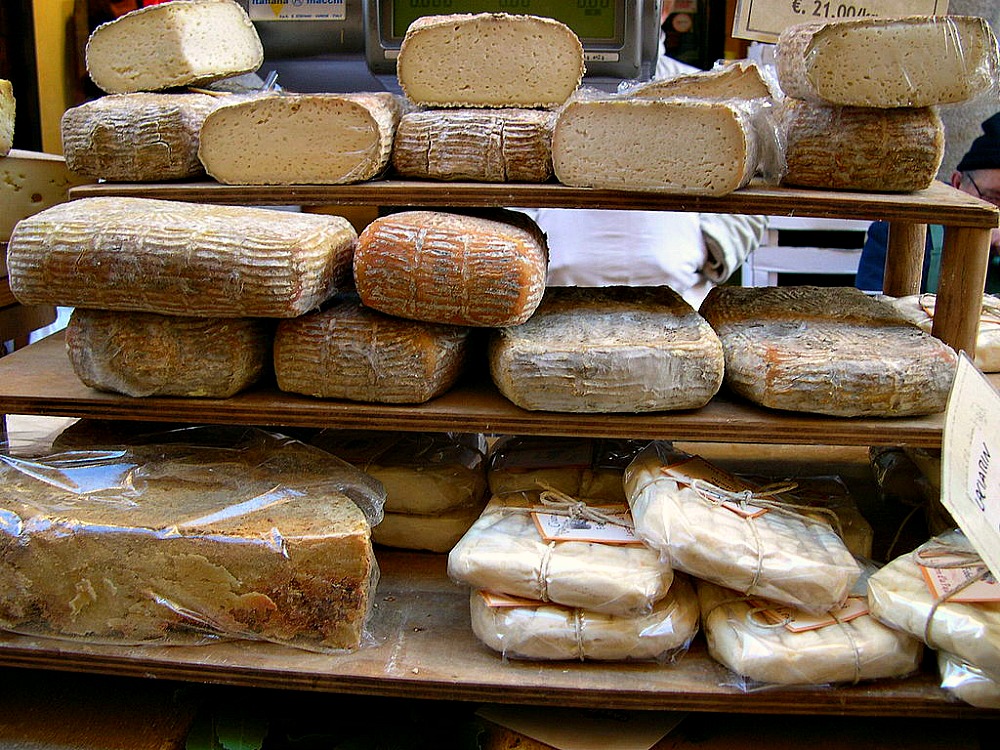
Concerning the cheese rind
Removing the rind of the cheese before cooking depends on some factors. Non-edible rinds will of course have to be removed completely. If it’s edible, then take into consideration your taste preference. If you like it, then you can add it, or remove it if it’s otherwise. There are certain types of rinds which may be strong, so you might have to remove about half or three quarters of it to avoid altering the dish’s flavor.
Making dishes in the kitchen with cheese requires simple but important steps. Keep these tips in mind to keep your cheese’s taste intact and create wonderful taste experiences.
Sophie White is a self-confessed foodie and a blogger, with a special penchant for natural cheese. Her love for cooking is only comparable to her keen eye for fashion. She considers herself an amateur cheese connoisseur. With her passion for high quality and authentic cheese, she currently partners with Sargento, a top real cheese producer in Wisconsin.
Disclosure: this post presented in partnership with sponsor New Local Media PTY LTD.

by Krista | Oct 1, 2015 | Spring
I’ve been thinking a lot about well-being. What it means. What it feels like. What it looks like.
For a time I thought I was supposed to pursue happiness. But in all honesty, I found that pursuit quite exhausting. Limiting myself to one emotion, setting one feeling or experience above all the others, well, it felt off kilter, out of balance, as though emotionally I was walking with a limp.
But well-being? That’s a lovely thing to pursue. It doesn’t mean making choices that lead to a constant state of euphoria, but making choices that contribute to growth, healing, nourishment.
In a nutshell, it’s doing what is good for me.

I looked up well-being in the dictionary, and this was my favorite definition:
“A satisfactory condition of existence.”
I love that. Not exemplary, not perfect, not amazing, but satisfactory.
I don’t know about you, but I often feel societal pressure to be amazing. To “do all the things.” That is also exhausting.
How much nicer to step back from all the hurly-burly and think: “How can I contribute to my well-being today?”
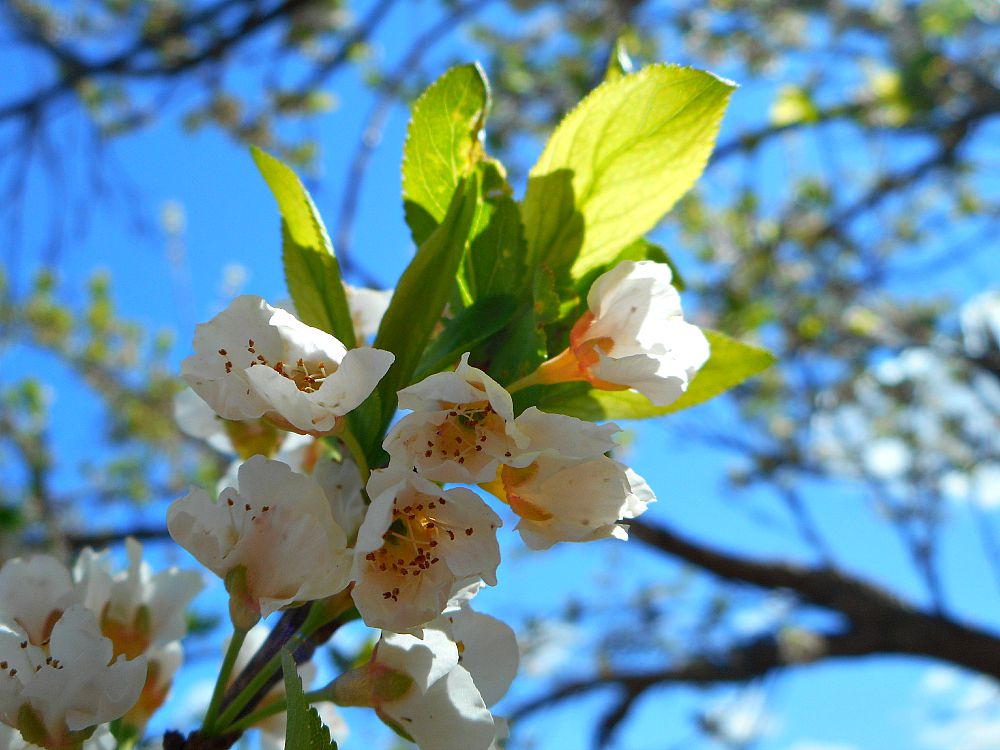
I like starting my days with that thought. It quiets all the chatter of “ought to’s” and helps me think about what is good for me, my family, our life.
Earlier this week it meant that I took a few hours alone to read Victoria magazines and drink tea and write in my journal. That day I needed grounding and resting and inspiring so I could get back to “normal life” with a strengthened heart and restored body.
Today it meant taking breaks from my outrageously long to-do list to sit and chat with good friends. Those connections are vital to my well-being.
Tomorrow it means getting up early to stock the car with audio books, healthy snacks, and the updated GPS so Bear and I can have a jolly, stress-free drive to our last medieval camping trip of the season.
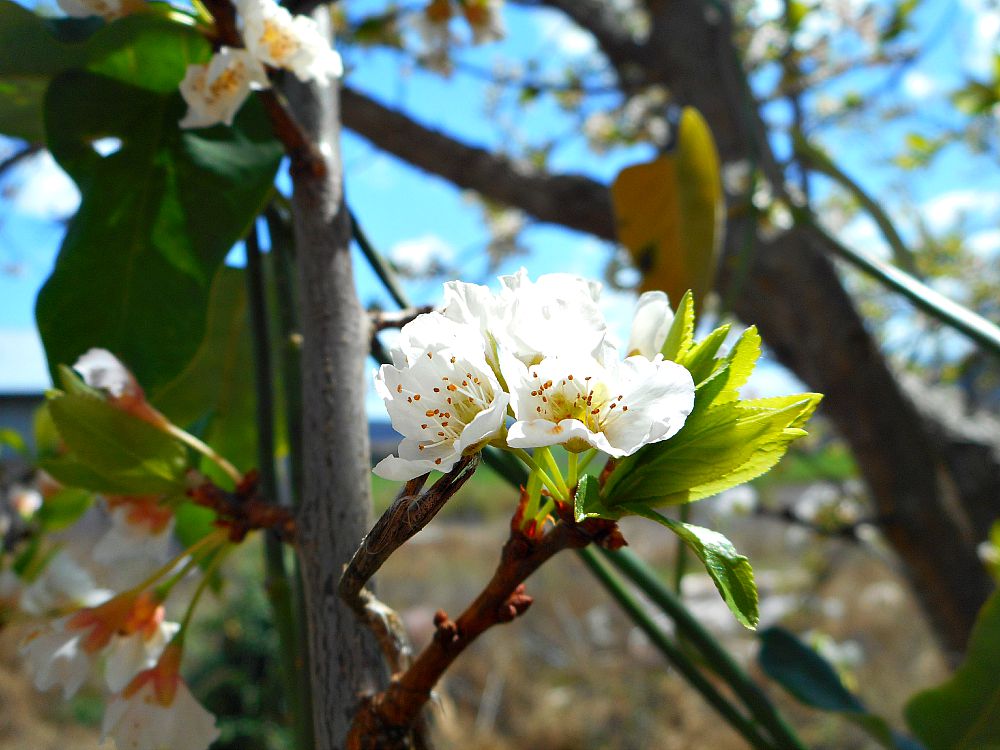
And tonight it means taking time for gratefulness before I fall asleep: getting the last of the apple and avocado trees planted, homemade cookies for the weekend, a good man who loves me and makes me laugh, great caretakers to look after our farm while we’re gone, and the anticipation of a campfire tomorrow night.
What is something you’re doing today to contribute to your well-being? xo

by Krista | Sep 29, 2015 | Spring
“As long as you can take one more step, take it.”
These words have been ringing in my head since I read them on HONY (Humans of New York) a couple of weeks ago.
They helped me be brave in a situation where I thought I couldn’t be brave any more. Turns out, I could.
They helped me keep exercising even when I didn’t see any visible results. Turns out, even when we can’t see results, our body still says thank you.
They helped me try again in areas where I really wanted to give up. Turns out sometimes that “one more try” is just the one you need for something good to happen.
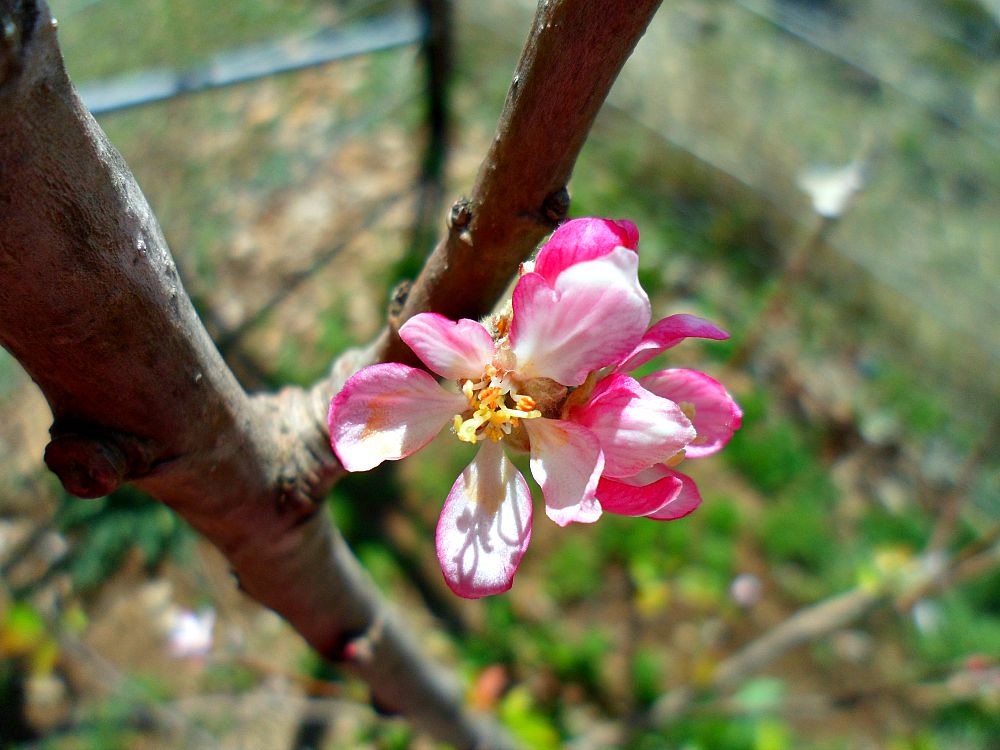
Today these words continue to spur me on to goodness. Helping me set aside distractions and tackle a huge assignment as I plug along in my business course. Reminding me to keep on eating and cooking healthy simply because it’s good for my well-being. Urging me to take the time to connect with people who inspire me to love, create, and live well.
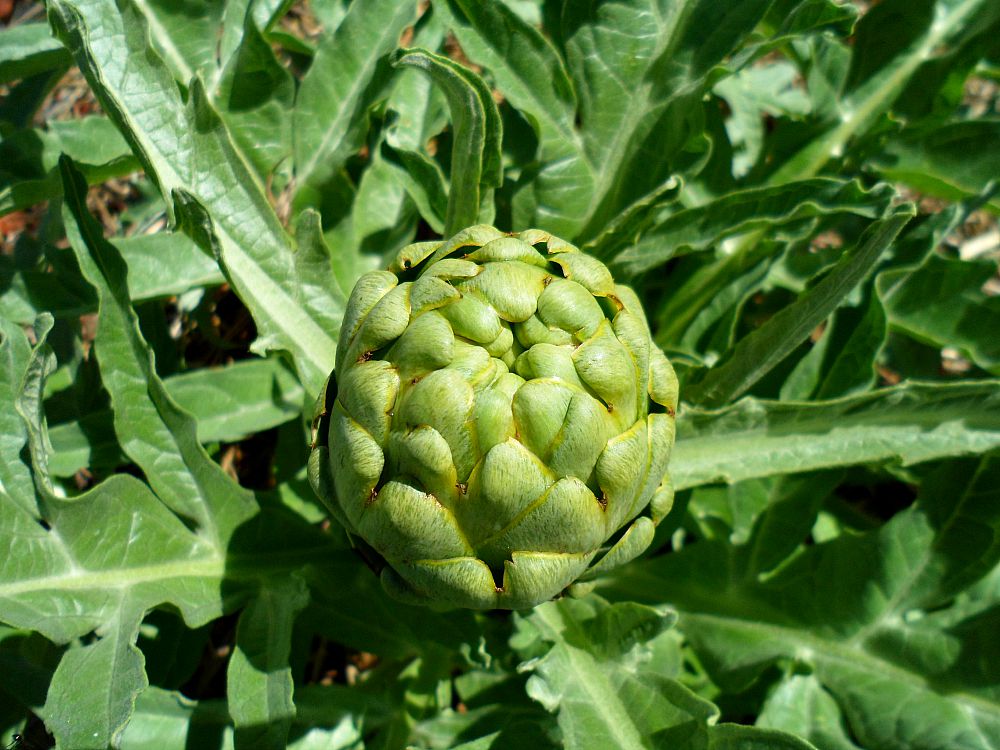
I’m so thankful for the people who share their stories on HONY. They never fail to impact me deeply. If you haven’t done so recently, please click here and spend a few minutes reading those stories. You cannot help but emerge a better person, richer in compassion, understanding, and kindness. And if you ever feel alone, read some more. Before long you will see that you aren’t.
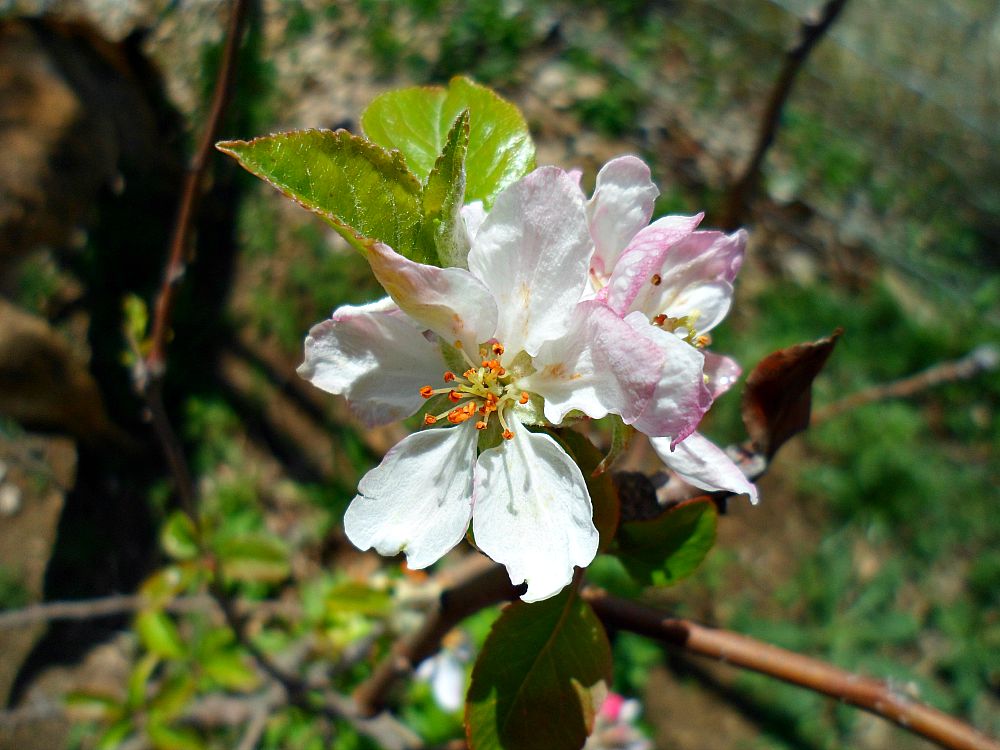
Have you read any words recently that were just what you needed? I’d love to hear about them. xo

by Krista | Sep 25, 2015 | Spring
One of my favorite things about medieval enactment is learning about the spices, fruits, vegetables, and herbs that were used in medieval times.
This past weekend I got to see the Templar style of eating and found it fascinating.
My friend Michelle, one of the pilgrims in the Templar encampment, made these beautiful little jars featuring some of the spices she uses to make food for the Templar group. I’ve used all of them in my own cooking except the Grains of Paradise, and I’m excited to get some of my own one day soon to experiment with.
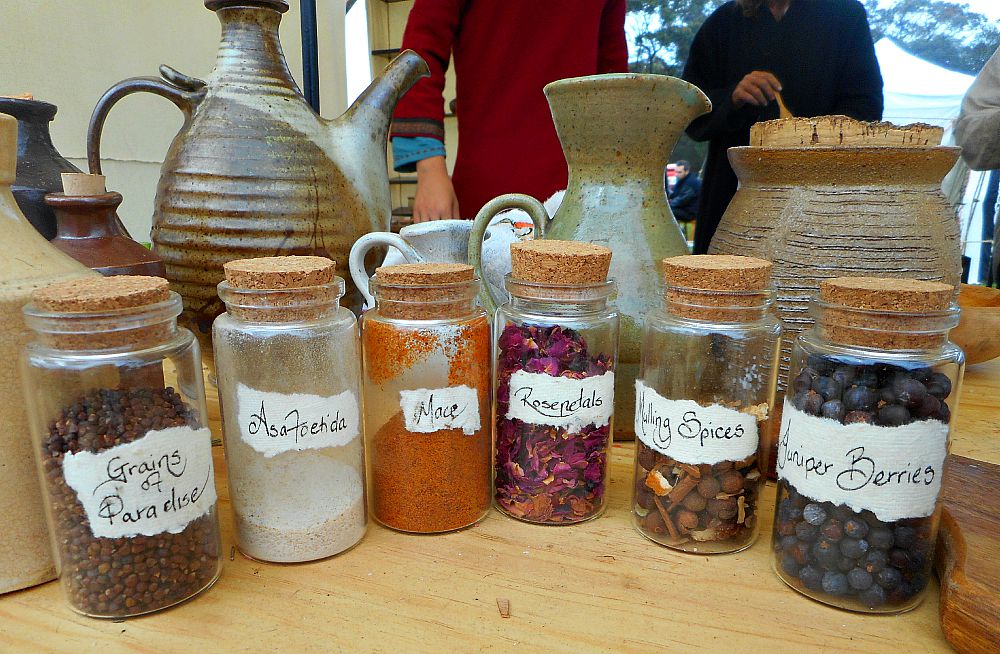
Here’s my friend Lawrence cutting up bread for a marvelous invention he made over the weekend, a medieval version of French toast.

Instead of the traditional egg, milk, and cinnamon mixture we use to dip bread in before frying, he dipped the slices in apple juice then cinnamon and toasted each piece over the fire. Oh my. Such comforting flavors and heavenly smells.
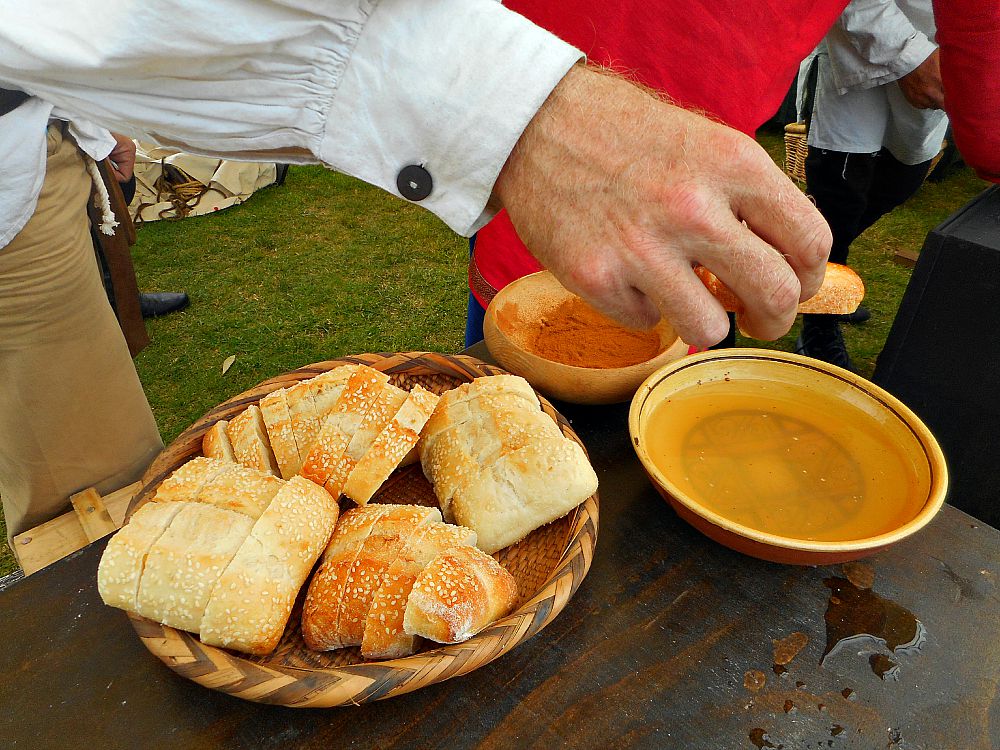
The kitchen bench was also covered with an array of bowls full of good things to snack on like fresh strawberries and salty pistachios.
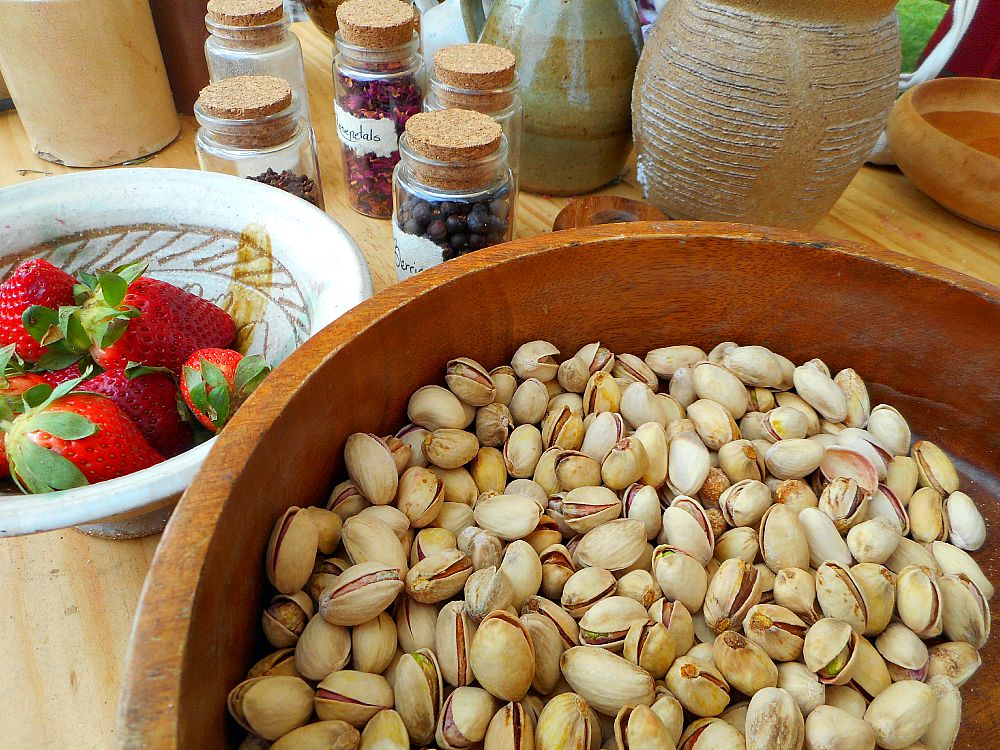
Oranges, mandarins, apples, and plump dates were also in abundance.
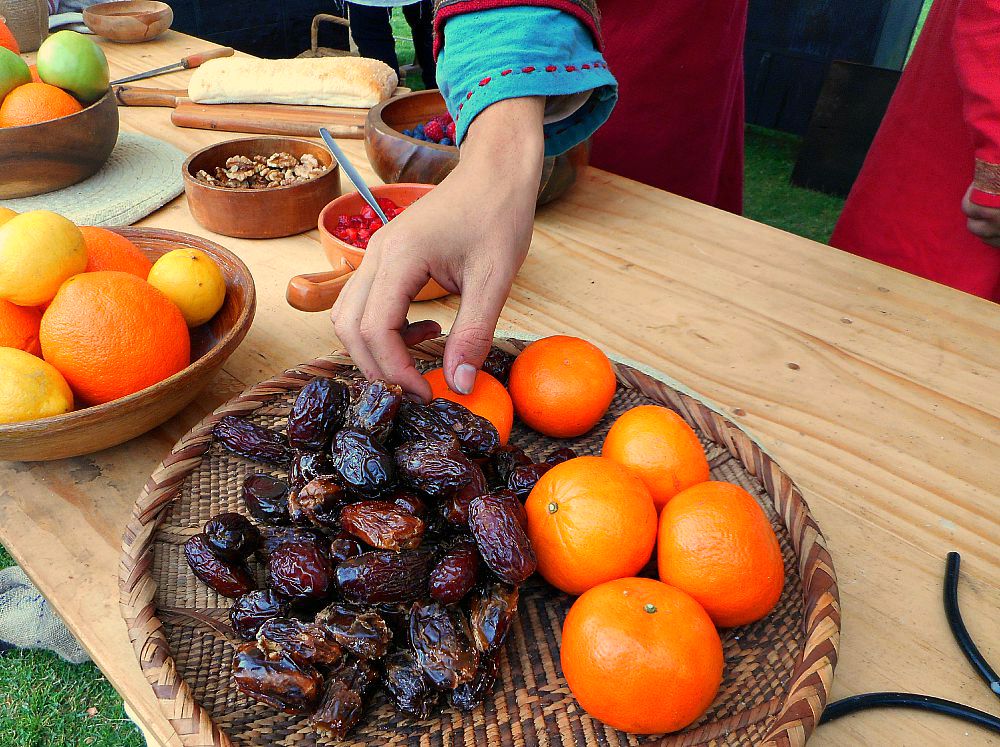
These crispy little pastries were light and crunchy, just the sort of thing you want to grab to nibble on while heading to a battle or for a bit of exploring around the markets.
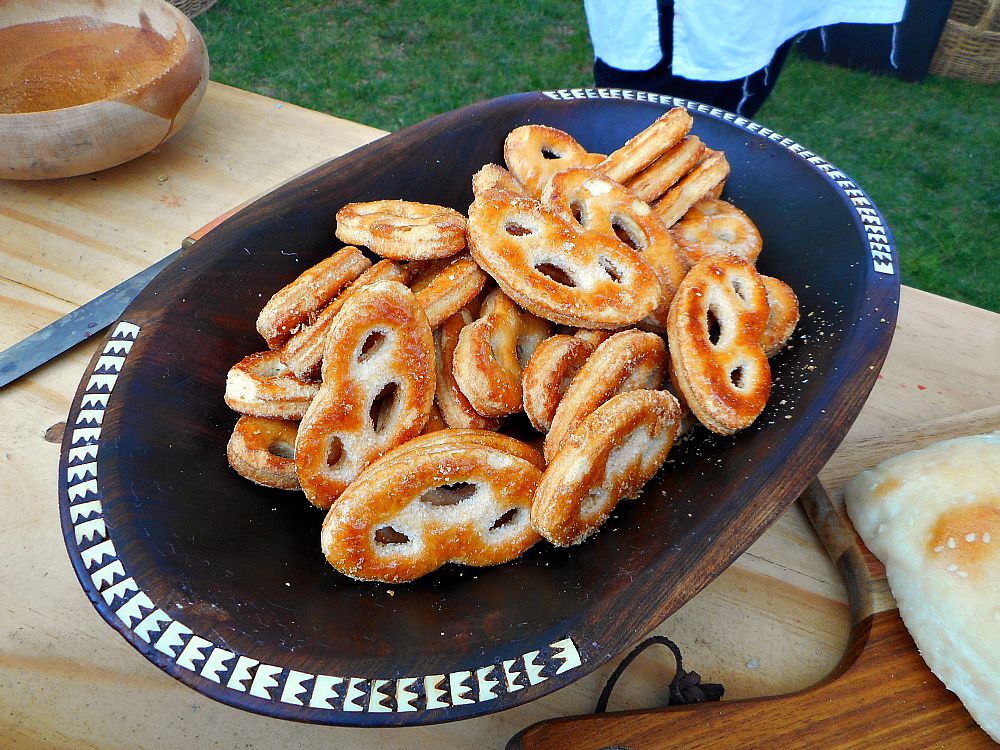
Lawrence also made a lovely strawberry sauce out of overripe strawberries. It would go beautifully over the grilled apple cinnamon French toast.
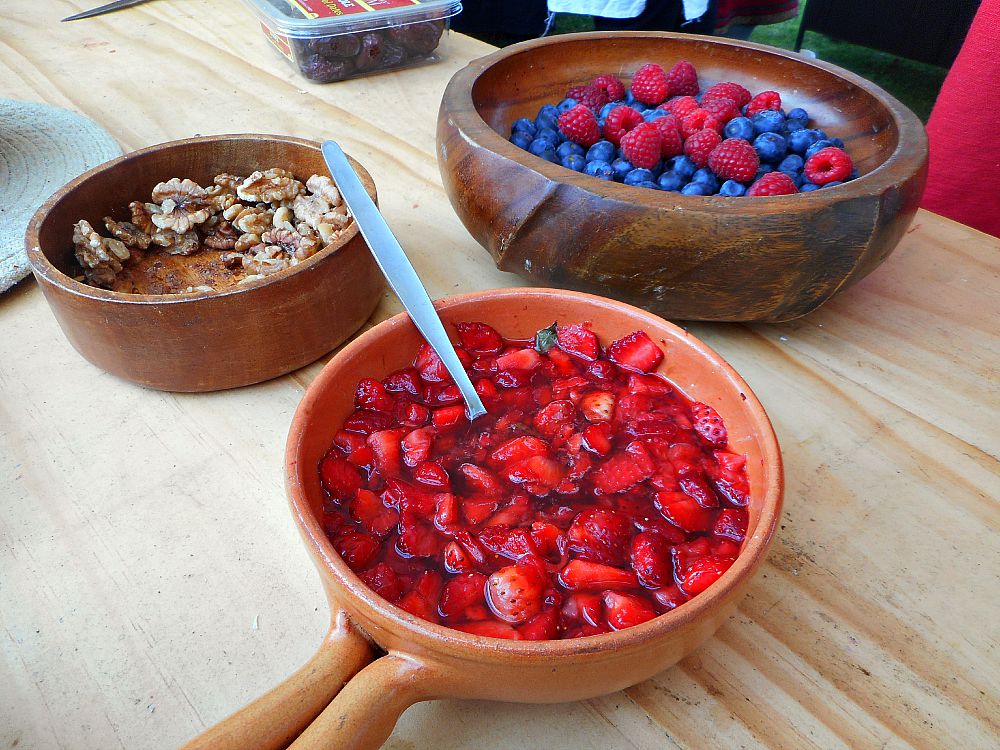
I like the look of this seeded bread in the basket. Doesn’t it make you want to tear off a piece and dunk it in herbed olive oil?
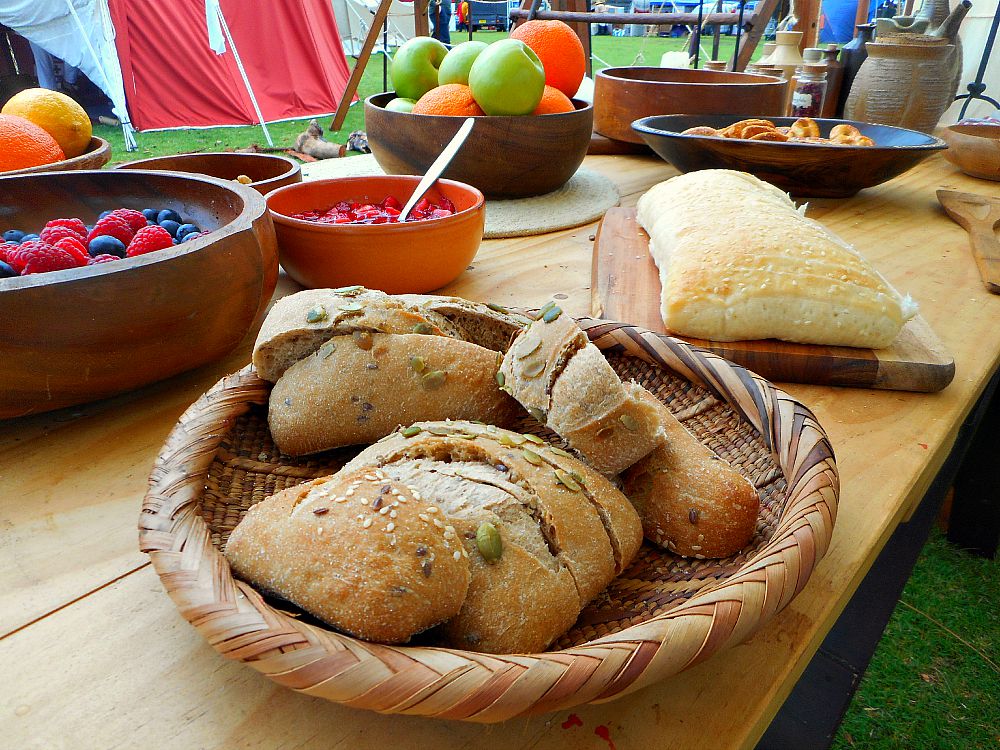
One of my favorite things the Templars make isn’t a food at all, but a drink. This gorgeous rosewater cordial flavored with fresh lemon and mint. It is truly refreshing on a hot afternoon, and so pretty to look at.
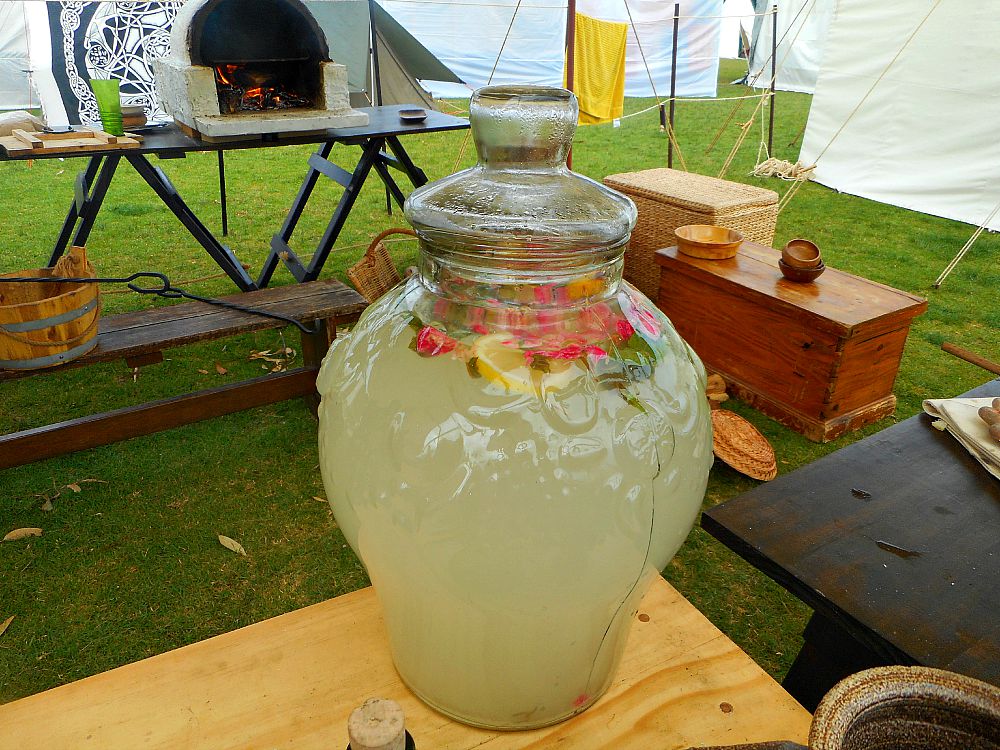
This week my friend Velva from Tomatoes on the Vine asked me to write about how I got into medieval enactment, and I’m happy to do so.
I’ve always loved history, spending innumerable hours as a girl reading encyclopedias, history books, and reference books to learn as much as I could. Reenactment wasn’t part of my world until I met my husband, Bear. I’d never known anyone who engaged in it, and really knew nothing about it. I honestly thought it was weird people dressing up in strange costumes and pretending they were someone else. How wrong I was.
Bear never pressured me to join in, just invited me to an event to see what I thought. I loved it!! These were my people, lovers of history and information, researchers and those who got in to try all the things I’d only read about. I met people who made leather shoes and Templar shields, those who dyed wool and linen with things they grew in their back yards, folks who made mead and their own ink and hand-sewed the most exquisite garments. I met bead-makers and wood-carvers, weavers and naalbinders, bone-carvers and blacksmiths.
I simply had to be part of it.
I joined the group run by my husband, Blackwolf, which is set in late 12th century/early 13th century, and started researching all sorts of cultures from that time period. My first persona was from medieval Finland and I set about making traditional 12th century Finnish clothing as I decided what I wanted to do. I thought about food, combat, clothing, and other crafts, and finally settled on medieval folk medicine. It has been a fantastic journey of learning and experimentation. I learned how to make my own medicines using herbs I now grow in my gardens. I love having things in my cupboard and fridge to alleviate stomach pains, headaches, burns, and cuts. That led to my writing a book of medieval remedies earlier this year. (Click here for a preview.) Making my own remedies is an extension of my desire to be as self-sufficient as possible.
The last few months I’ve been working towards a Bedouin persona, delving into the history of medieval Bedouin food, medicine, and culture. I’m working on new garb and adding Bedouin herbs and spices to my stock cupboard. It’s marvelously fun and interesting.
Now, however, I must get back to modern life and start a load of laundry, finish up the ham and cheese muffins I’m making, and tackle some paperwork.
What are you working on today? xo

by Krista | Sep 23, 2015 | Spring
Bear and I are home safe and sound from our wild and wonderful trip to the St. Ives Medieval Faire. We’re utterly knackered after the 27-hour round trip, but chock full of great memories made with old and new medieval friends.
It makes me smile to think back on all the great discussions held around campfires, huddled under tents out of the rain, and on straw bales outside the sanity-saving coffee vendor’s tent. There’s truly never a dull moment at medieval events, for each person you meet has a passion backed up by years of research and experimentation that leads to the most fascinating conversations.
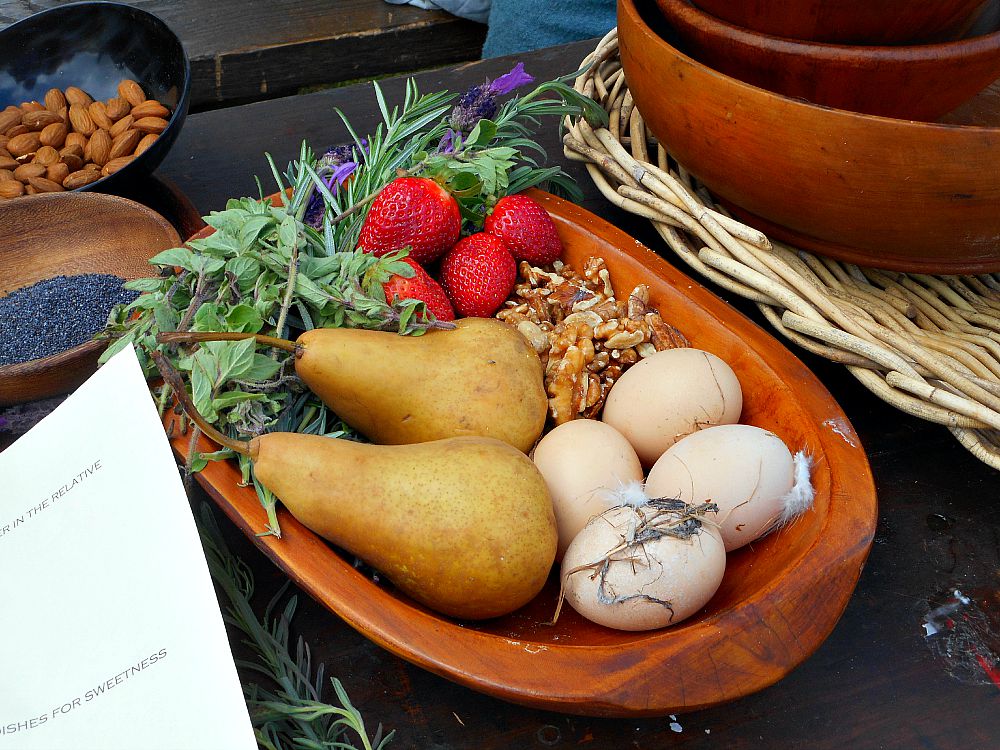
I learned about medieval perfumery, Varangian leather armor, how to make soap from olive oil, what people ate for lunch in the 14th century, Templar religious practices, Odinism, Scottish herbalism, surgical practices in medieval times, and how to do Viking tablet weaving.
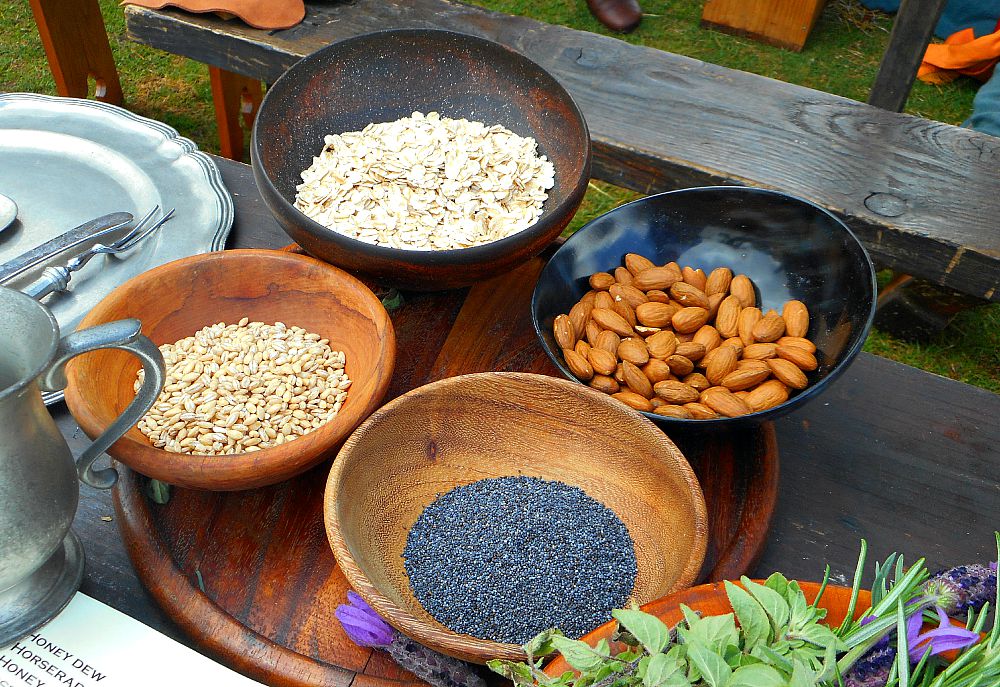
I loved strolling through the medieval encampments and market stalls, learning all about how rose petals and Grains of Paradise were used in the Middle East and what vegetables were grown and cooked with by the Vikings.
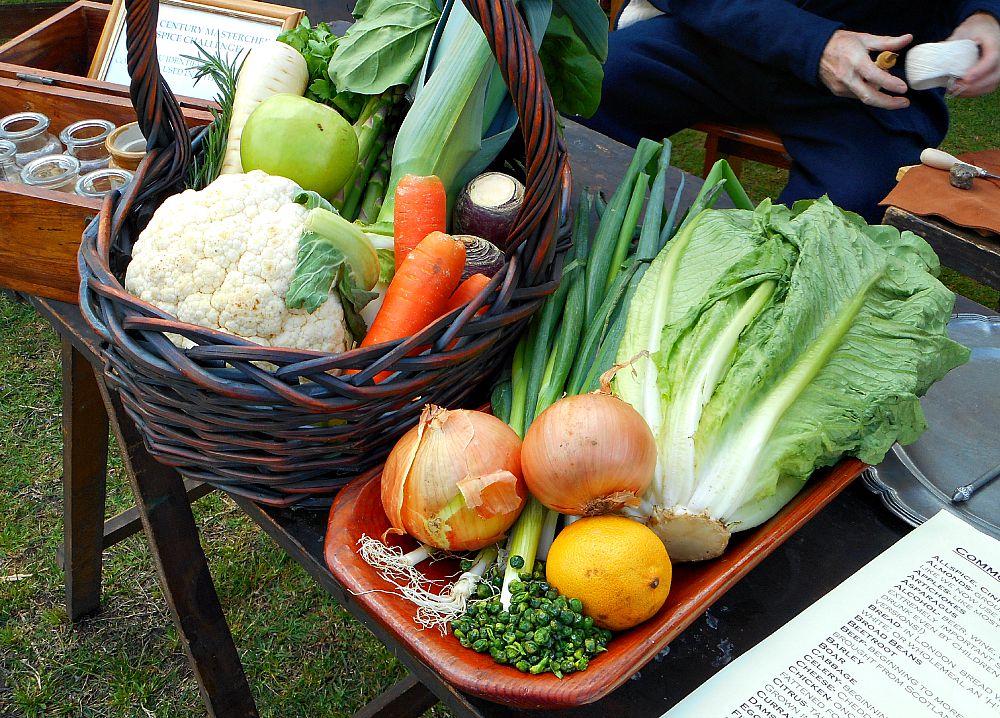
I couldn’t get enough of all the gorgeous handmade crafts, from hand-dyed wool and linen to carved wooden spoons. Aren’t the colors marvelous?
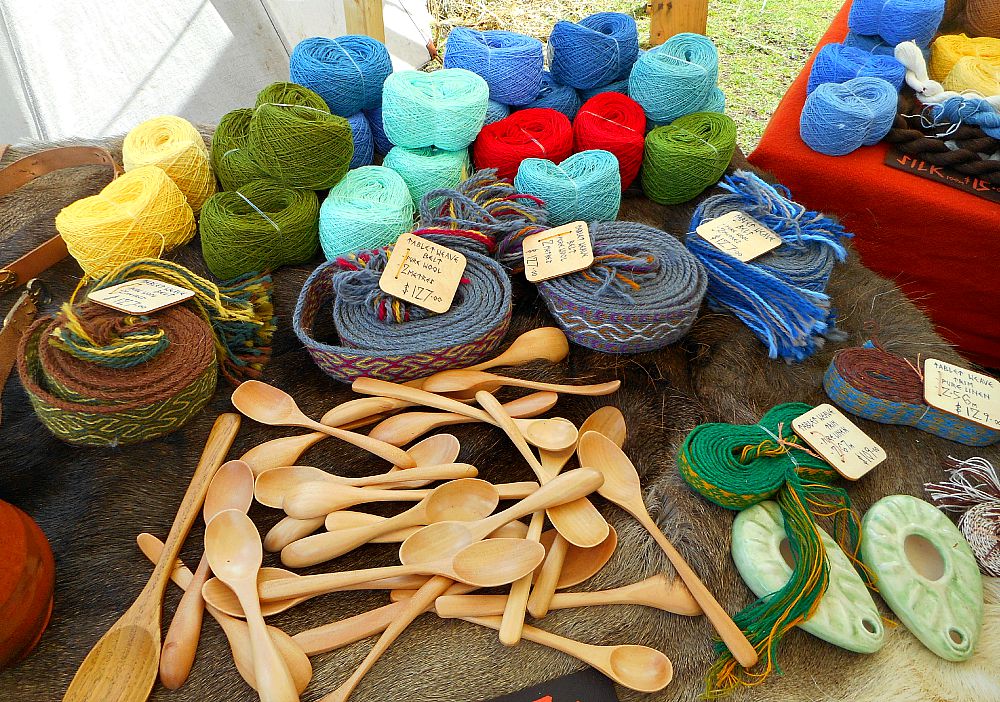
I’m always charmed by the naalbinding mittens, socks, and slippers. They look so cozy and warm, and the cheery colors and patterns are delightful.
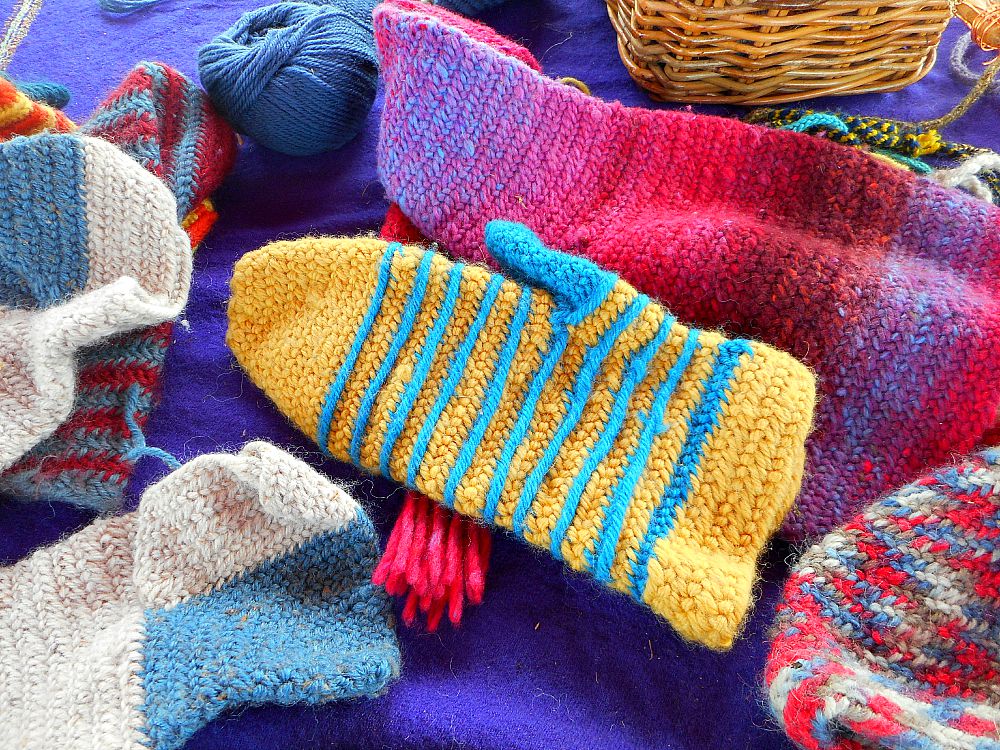
Some of my favorite displays are the toys. The hand-carved wooden horses and tiny dolls made from scraps of wool and linen.
All this beauty and talent and history inspires me no end. As I sat on the bus coming home, my brain was whirring with things I want to research, make, and taste. Bear and I talked a mile a minute when we got in our car for the final leg of our journey, listing plans to enhance our own encampment, garb, and personas.
We want to finish the medieval bed Bear started a while back, complete my armor so I can start practicing medieval combat, and add the colorful Bedouin tassels I’ve been making to the Bedouin baby cradle, doorway to our tent, camel saddles, tent poles, and anything else that needs them.
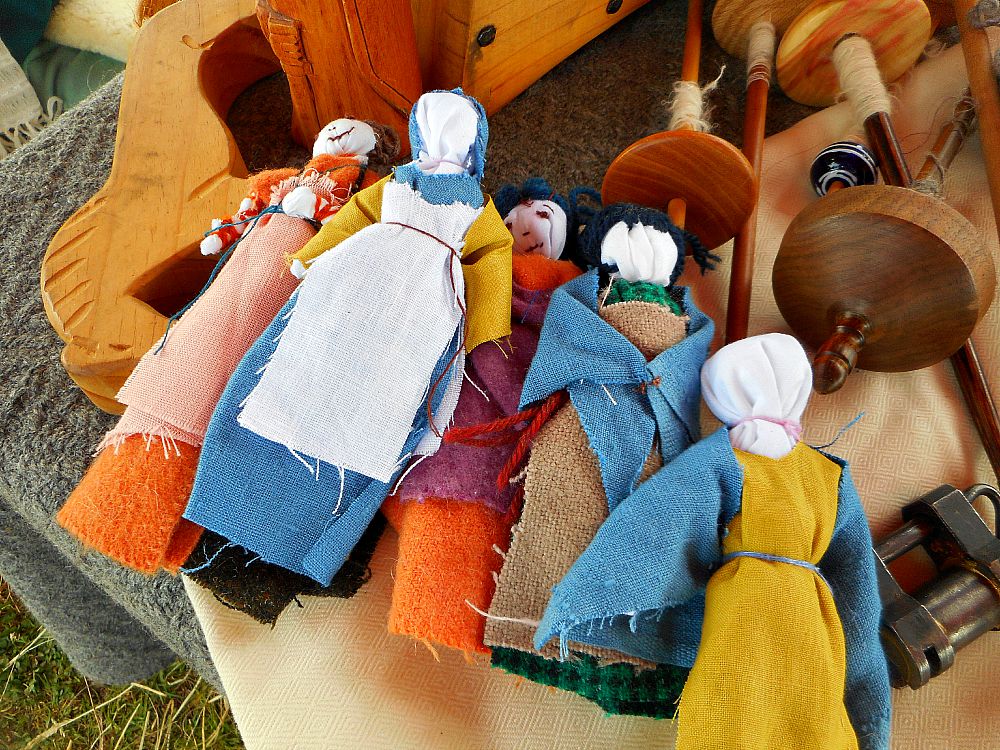
It all makes me so happy and excited.
But first we need to settle back into normal life a bit. There is laundry to be done, dishes washed, bread made, animals fed, gardens watered, and errands run.
It’s so good to be home. xo






























